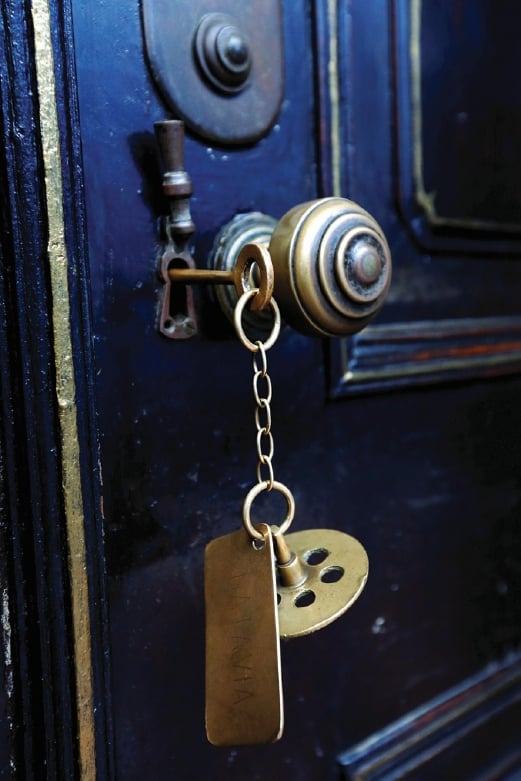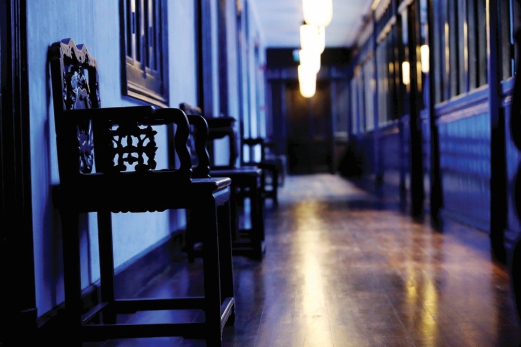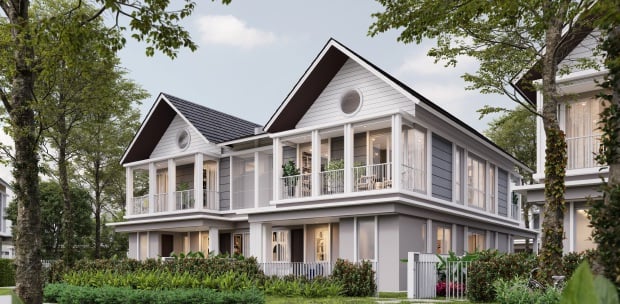The Blue Mansion’s glory days are far from over, writes Fauziah Ismail
WE overshoot the entrance to the Cheong Fatt Tze Mansion at the corner of Leith Street in George Town, Penang. The gate is closed. We park the car by the roadside to make a call to the reception. The girl who picks up the call tells us to make another turn.
The security guard sees us. He opens the gate. “Checking in,” we tell him. He lets us through to park the car at the lawn in front of the mansion.
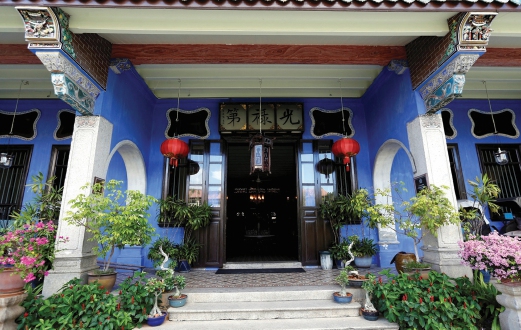
The checking-in process is swift. Identity cards photocopied, credit card swiped. A few minutes later, the keys to the “Batavia” and “Sinkek” twin sharing rooms are in our hands.
Back in its glory days in the 19th century, the Cheong Fatt Tze mansion boasted 38 rooms, five courtyards, seven staircases and 220 windows. Today, the number of rooms have been reduced to 16 beautifully conserved and restored suites, each decorated with family heirlooms and equipped with modern amenities and opulent luxury befitting a tycoon’s home.
The five courtyards remain. So have some of the cast ironworks and art nouveau stain glass windows.
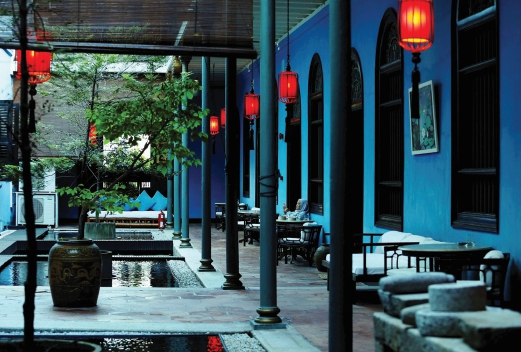
BLAST FROM THE PAST
The entrance hall (or lobby, in a modern hotel) is separated from the main inner courtyard by a floor-to-ceiling carved and gilded screen. Two huge vases slightly taller than us are on each side of the screen. We aren’t sure whether the 19th-century Chinese ebony chairs and tables inlaid with mother-of-pearl at the entrance hall are for display only or for use by guests.
Behind the screen is a treasured past. There’s an open air square courtyard that provides natural lighting to the inner sanctum of the mansion.
We are told that this is a traditional Chinese courtyard house plan but Cheong Fatt Tze, the Hakka tycoon who once owned the mansion, had incorporated European architectural elements and materials. The four pillars at the courtyard are cast iron Corinthian columns. Standing in the centre of the courtyard and looking up, we see the gorgeous wrought iron grillwork brought over from Scotland.
Feng Shui masters were consulted before Cheong started building the mansion. “Stand in the middle of the courtyard,” Daniel Selvantharan, the hotel manager, tells us. It is here that the feng (wind) meets shui (water), thus making it a space with the strongest natural energy flow. And it is here that breakfast is served every morning.
To the left and right of the main courtyard are the suites. There are more courtyards, two on each side. Our room, Batavia, is located where the water-themed courtyard is, while Sinkek is at the other wing of the mansion.
Sitting on the sofa at the water-themed courtyard and listening to the sound of the trickling water in the pond filled with koi fish, we can’t help wonder how the Cheong family lived during those days. At the height of its glory, the mansion served as an office and was the base for Cheong’s businesses. It was also the home of his favoured seventh wife, Tan Tay Po.
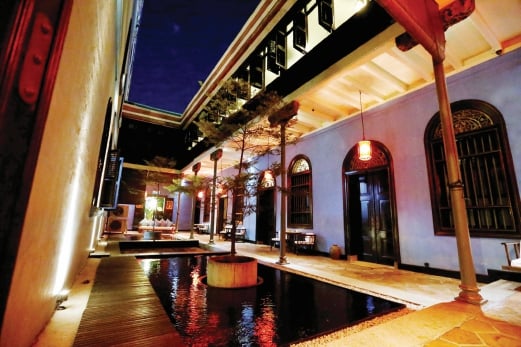
THE ARCHITECTURE
It was said to be one of the most lavish and elaborate constructions at that time. Literature on the mansion states that the architecture of the mansion originates from the Su Chow dynasty period in China.
“Of his vast empire, Cheong chose Penang to build the most elaborate of his homes and to raise his sons. It is reputed to be one of only two buildings of this size outside China and certainly the most perfect. While the mansion’s floorplan is essentially Chinese, the overall effect is eclectic and typical of 19th-century Straits Settlements architecture. Gothic-louvered windows, Chinese cut and paste porcelain work, Stoke-on-Trent floor tiles, Scottish cast iron work and art nouveau stained glass are among the features in this inspired work of art.”
The tycoon used only the best local and imported materials. He brought in artisans in from Southern China and imported building materials from as far away as Scotland.
Daniel tells us a local architect now owns the mansion. He didn’t give us the architect’s name. But we are resourceful. Laurence Loh’s name pops up from a quick Google search. The mansion came on the market in 1990 after the death of Cheong’s last son. It was in a severe state of dilapidation. The current owners bought the mansion with the prime intention of returning it to its authentic original form.
This includes its colour. The Cheong Fatt Tze Mansion is also commonly known as the Blue Mansion. Well, indigo, to be exact.
And why indigo? Well, we are told that blue was very popular in the Colonial period.
The blue colour of the mansion is the result of mixing lime with natural blue dye made from the Indigo plant. The dye was imported from India to Penang by the British. The lime-wash was very effective in the tropics as it absorbed moisture and cooled the house while dispelling moisture without damaging the structural integrity of the walls.
The restoration project won the Most Excellent Project award at the Unesco Heritage Awards in 2000.
Walking through the mansion, it hardly surprised us that it has been featured in various period movies such as the 1993 Oscar-winning French film Indochine, starring Catherine Deneuve, The Red Kebaya, Road to Dawn and 3rd Generation. The mansion has also been featured in programmes broadcast on various international television channels such as CNN, BCC, The History Channel, Discovery Travel & Living.
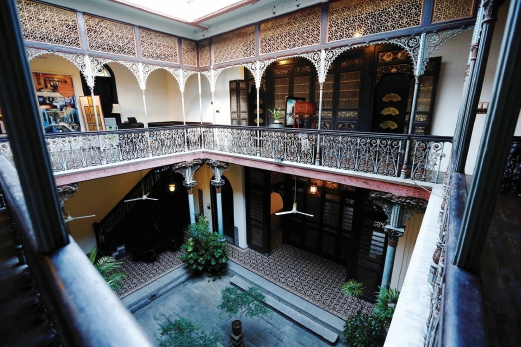
KEEPING HISTORY ALIVE
There is an open area and two rooms on the first floor that the new owners have turned into a mini museum. On display are paraphernalia owned by the former owner Cheong. These include string instruments and drums played at Chinese weddings, his Western top hats and Chinese tunics and his wife’s silk cheongsams. There are many embroidered linens in red silk, which possibly denote how wealthy the family was.
There are also some samples of the architectural materials used in the restoration of the mansion: The blue dye for the limewash paint (traditional obtained from the indigoferra arecta or indigoferra tinctora plant), lime putty, tung oil used over tempra paintings and in the limewash and Ta Chik (the big oil after cooking and sieving) which is used as a timber finish.
Tours are offered in English three times a day to central parts of the house.


